Competition in the beauty industry is fierce. Cosmetics branding is the key to help you make your beauty brand stand out from the crowd—if you do it right.
In order to succeed, you need to break through the clutter, grab your ideal customer’s attention and show them why your product is the one they need.
The best way to do that? Branding.
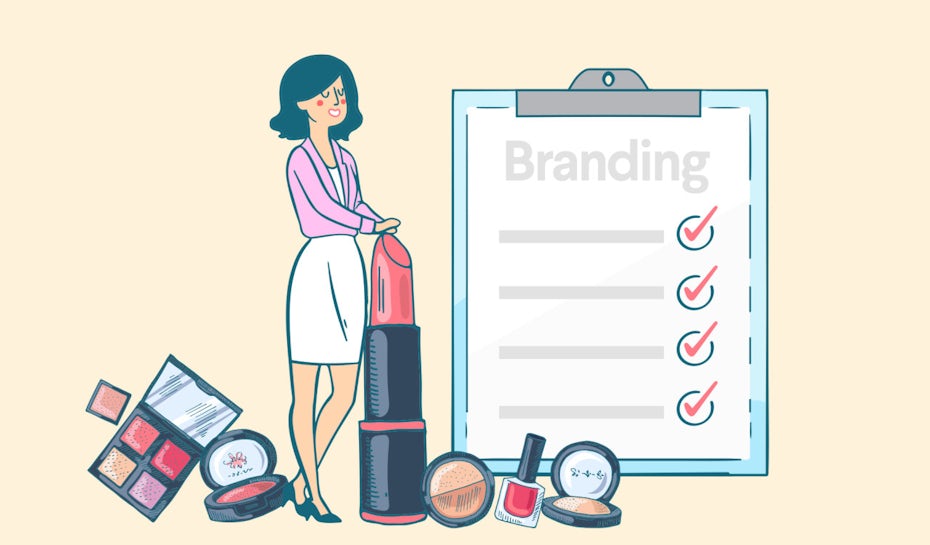
Branding your cosmetics business and developing a solid cosmetics branding strategy is a must if you want to succeed in today’s uber-competitive beauty market.
But how, exactly, do you do that? Let’s take a look at all things cosmetics branding—and how you can brand your company and products in a way that leaves a mark on the industry—and your target customers:
The basics of cosmetics branding
—
First things first, before we dive into how to brand your cosmetics company, let’s first cover the basics of branding.
When it comes to branding your business, there are three basic concepts you need to understand. They’re known as the “three B’s”—brand, branding and brand identity.

The differences between the three B’s are subtle, but important:
- Your brand is the perception of your company out there in the world.
- Your branding is the act of shaping your unique, distinctive brand; think of it as the active practice of bringing a brand to life.
- Your brand identity is all the key elements that your company creates to portray the right image to its consumer—like your brand voice and brand design including your logo, your website, or your cosmetics packaging—to communicate your message to your audience.
All three b’s are a must if you want to build a successful, marketable beauty brand. Without active branding, you won’t have control over your brand. Without a brand identity, you can’t move forward with your branding. Each of the three B’s builds off the other—and all three are must have’s if you want your cosmetics brand to thrive.
4 questions to answer before you start branding
—
Now that you know the basics, you might be tempted to jump right into the cosmetics branding process. Which makes sense; you’re excited about your business and your products and can’t wait to get them out into the market.
But if you want your brand to really stand out and effectively reach your ideal beauty customer, there are some key questions you need to answer before you start building your brand.
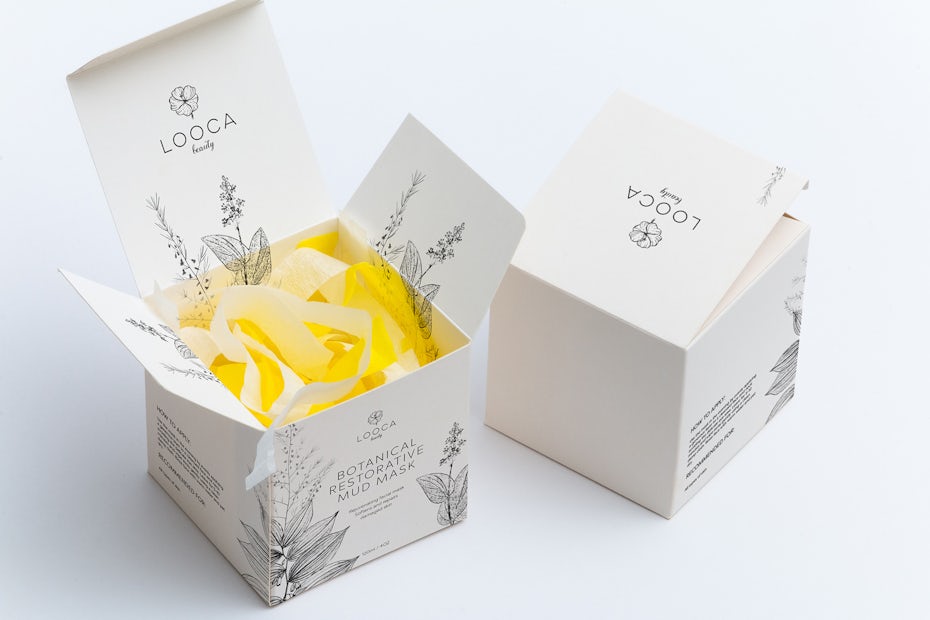
Who are you?
Before you can expect customers to connect with your company and products, you first need to understand who you are as a brand.
If you could describe your brand in three words, what would they be? Maybe you’re dark, edgy and innovative. Maybe you’re feminine, fun and bright. Or maybe you’re all-natural, environmentally-friendly and subtle.
Whatever kind of cosmetics company you’re trying to build, boiling your brand down to a few adjectives can help simplify the process, streamline your branding and guide your branding decisions.
What are your competitors doing—and what are you doing differently?
As mentioned, there is a lot of competition in the cosmetics world. If you want your brand to succeed, you need to know what makes your brand stand out.
Look at your competitors. What are they doing to make their mark in the industry—and how are you different? Knowing what makes you unique and different from what’s already out there is your point of difference or POD. It’s what’s going to make your ideal customer choose your products over your competitors.
What are your mission and values?
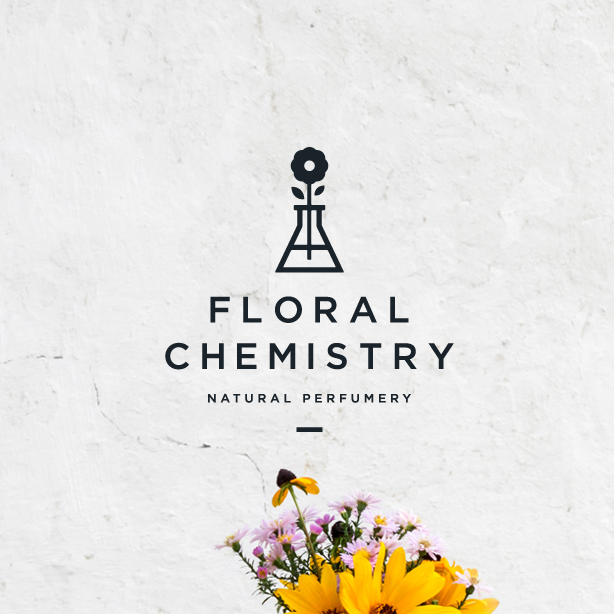
Customers want to work with brands they can stand behind. So if you really want to connect with your customers, you need to do more than make amazing lipsticks or super pigmented shadows—you need a strong corporate mission and values.
First, there’s your mission statement. Think of the mission statement as the “why” behind your business. For example, maybe you’re determined to raise the standard for eco-conscious manufacturing and packaging in the cosmetics industry with your line of all-natural products.
If you’re not sure what your corporate mission is, try filling in the blanks of this statement: “Our company exists to ______. In five years, we will be _____.”
Next is your corporate values. Your values will not only drive your internal strategy, they will also help you connect externally with your customers. What do you stand for as a brand? Using the all-natural product example, your corporate values could be sustainability and safety.
Your corporate mission and values tell you, your team and your customers what you stand for and what you aim to accomplish as a brand. Together they can go a long way in helping you carve out your niche in the cosmetics industry.
Who is your ideal customer?

When you build and launch a cosmetics brand, you want to make sure it speaks to your ideal customers, but you can’t do that if you have no idea who those customers actually are.
Before you start the branding process, take the time to create an ideal customer avatar. Who are you targeting with your products? What are they looking for in a cosmetics brand? What are their challenges?
Knowing who your customer is will help you make the right branding decisions and guide the branding process and will ultimately help you build a brand that speaks to and connects with your ideal customer.
Building your brand identity and designing your must-have branding elements
—
Once you’ve answered the core questions about your brand the next step of the branding process is building your brand identity. The first part of that process is to define your design building blocks.
There are a few key design elements and principles that you need to define to drive your branding process, including:

- Typography. The fonts you use in your brand elements can send a strong message about your brand to your audience; for example, using an edgy graphic font on your eyeshadow palette packaging—think: Urban Decay—is going to send a very different message than a more feminine, script font used in brands like Too Faced.
- Color palette. Color is an extremely powerful branding tool. People have strong associations with color and when you understand those associations, you can use color strategically to inspire specific thoughts, emotions and reactions in your audience. For example, if you’re launching an all-natural line of products, you might want to incorporate green, which people associate with nature. If you’re launching a line of prestige products, you might work purple into your color palette, which is typically associated with luxury or royalty.
- Form/shape. A sharp, angular logo is going to create a different look and feel to your brand, and send a different message, than something more rounded or organically shaped—so it’s important to choose forms and shape that reflect who you are as a brand.
- Brand voice. Having a clear brand voice is important for any brand—but it’s especially important in the cosmetics industry, where social media plays such a big part of building a brand. Your brand voice is an integral part of your branding—and defining your voice from the get-go is a must to ensure a consistent brand experience for your audience.
Designing your key cosmetics brand elements
—
Once you’ve nailed the basics of your brand identity, it’s time to take things a step further and actually design your key cosmetics brand elements.
There are a few brand elements any cosmetics company will need to launch a successful business, including:

- Logo. Your logo is the face of your beauty business and, as such, it’s the most important element you’ll bring to life during the branding process. Your logo is going to be one of the first experiences potential customers will have of your brand and because it’ll be featured prominently on everything from your product packaging to your website, it will definitely be the design that’s most closely associated with your brand.
- Digital presence. A lot of your customers are going to interact with your brand online, so your digital presence—including your website, your emails, and your social media platforms—need to be an accurate reflection of your cosmetics branding.
- Packaging. Creating on-brand packaging is important for any business selling a physical product, but it’s especially important in the cosmetics industry. Because competition is so fierce, both in stores and online, you need to create cosmetics packaging that’s not only functional, but feels unique, innovative, and on-brand—and jumps off the shelf and grabs your ideal customer’s attention.
- Business cards. Part of succeeding in the beauty industry is forming partnerships with retailers, influencers and other brands. You’ll also need an on-brand business card complete with your logo, website and any other elements of your brand identity, to build those connections.
- Merchandise & swag. Depending on your marketing strategy you might also want to think about branding additional items such as shopping bags, stickers, wrapping paper or t-shirts.
All of these elements are a key part of launching a successful cosmetics brand. Before you launch your cosmetics line, you need to have them all designed and ready to go, ensuring they’re all an accurate representation of who you are as a brand.
Branding yourself in the beauty-obsessed world of social media
—
In 2020, every brand needs a presence on social media, but it’s especially essential for beauty brands.

If you want your beauty brand to succeed, you need to brand yourself on social media. While all platforms are important, YouTube and Instagram are both visual platforms where the bulk of beauty content lives, making them, hands down, the most important channels for cosmetic brands.
Focus on developing on-brand content for YouTube and Instagram. This can include tutorials, unboxing new products and Q+A’s about how to use your products.
You should also have a plan for connecting with beauty influencers. Influencers typically have extremely engaged audiences. If you can get an influencer with a similar audience to endorse your brand, it can go a long way in getting your products into the hands of your ideal customers.
New to the world of influencer marketing? Here are a few things to keep in mind:
- Make it personal. Influencers can get a lot of messages from brands. A stock message isn’t going to get their attention. If you want an influencer to work with you, make your message personal. Show them you know who they are and what they’re about—and then craft a personalized message that speaks to why your brand is the right fit for their channel and their audience.
- Focus on micro-influencers. Getting a major beauty influencer to endorse your brand, especially when you’re first starting out, can be nearly impossible, or way too expensive. Luckily, you don’t need a huge name to have a successful influencer marketing push. Micro-influencers are influencers with smaller audiences, but those audiences are often extremely engaged, and as such, those partnerships can deliver a lot more bang for your buck. According to AdWeek, micro-influencers are 6.7X more effective per engagement than larger influencers.
- Deliver the right product education. You want any influencer partnerships to push your brand forward—and a lot of that has to do with education. Make sure that when you partner with influencers, you spend time educating them about your products, including application techniques, key ingredients, and what makes each product unique.
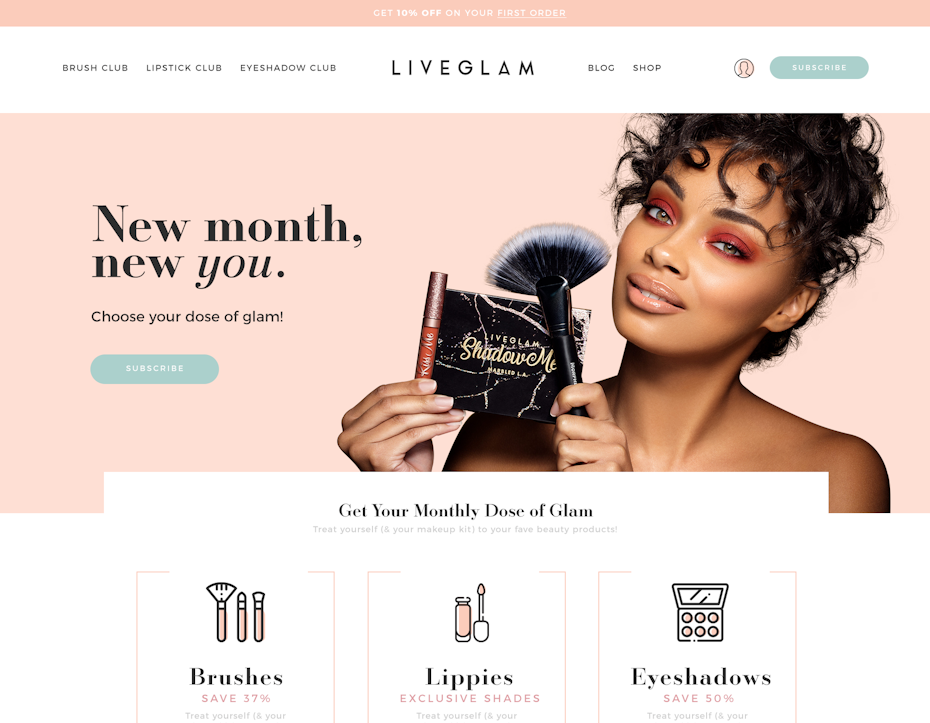
Bringing it all together with a brand style guide
—
Cosmetics brands are all about style—and if you want your branding to feel consistent, you need to tie it all together with a brand style guide.
Your brand style guide is a centralized document that houses all the key information about your cosmetics branding, from your brand color palette to your different packaging designs to the do’s and don’ts of your social media brand voice.
You can make your brand style guide as detailed as you’d like (the more detail, the better!), but at the very minimum, you should plan to include:
- Brand story
- Corporate mission and values
- Logo(s) and appropriate uses
- Color palette
- Typography
- Imagery
- Brand Voice
- Packaging Design
Having a brand style guide is essential because not only is it super convenient to have all that key information in one place, but it’s also helps to maintain consistency for your cosmetics brand. A style guide helps to get everyone on your team on the same page, which ensures that whatever is produced for your brand, whether it’s an email reaching out to a key influencer or a packaging design for a new line of lipsticks, is in line with your big-picture cosmetics branding strategy.
The key to successful cosmetics branding? Consistency and flexibility
—
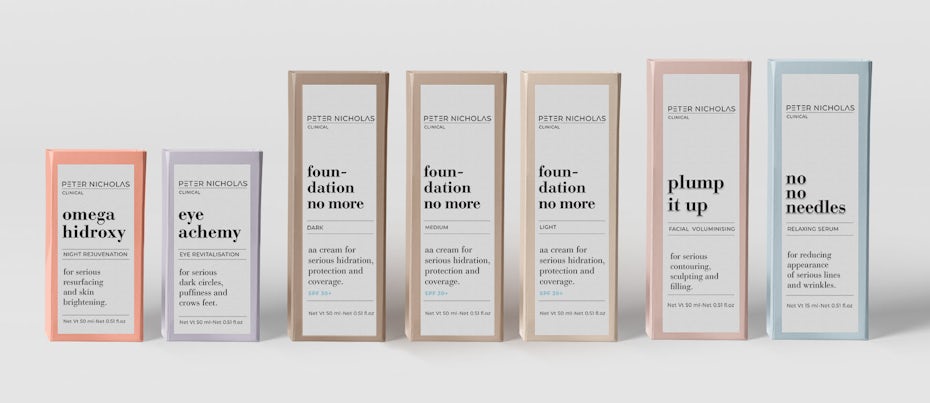
Congratulations! You now have all the essential elements to build a successful cosmetics brand. But there’s another element to branding that can’t be skipped—consistency.
If you want your cosmetics brand to succeed, your audience must have a consistent experience of your brand wherever and however they encounter it. Your brand needs to be consistent across your website, social media, influencer partnerships, packaging, product quality and logo. Every element that represents your brand should be aligned with a consistent brand strategy.
Your brand also needs to feel consistent across every platform, design and brand touchpoint. This helps to build trust with your audience—and that trust plays a huge role in transforming prospects into customers and customers into brand evangelists. This is even more important in today’s “cancel culture,” when one misstep, like the Jaclyn Hill lipstick debacle, can cause the beauty community to turn on a brand, leading to serious damage to that brand in the long-term.
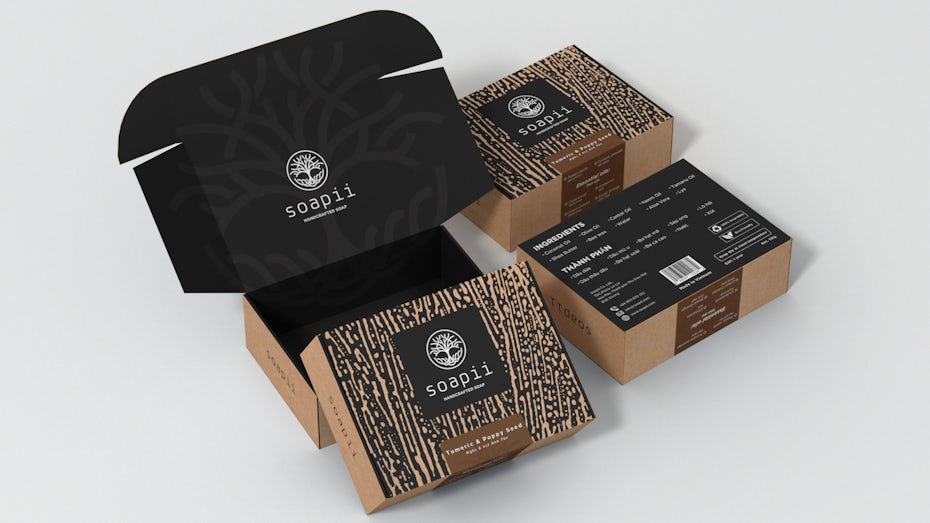
Now, keep in mind, consistency is important, but so is flexibility. If the beauty industry evolves, if your customer changes or if something just isn’t working for your brand, you need to be flexible enough to pivot and adjust your cosmetics branding strategy accordingly.
Take your cosmetics branding to the next level
—
Building a cosmetics brand can be an exciting, creative and fulfilling process. Now that you know exactly how to develop your cosmetics branding strategy, there’s only one thing left to do—get out there and get branding!
The post Cosmetics branding: how to build a brand in the cosmetics industry appeared first on 99designs.
Cosmetics branding: how to build a brand in the cosmetics industry posted first on https://www.lilpackaging.com
No comments:
Post a Comment